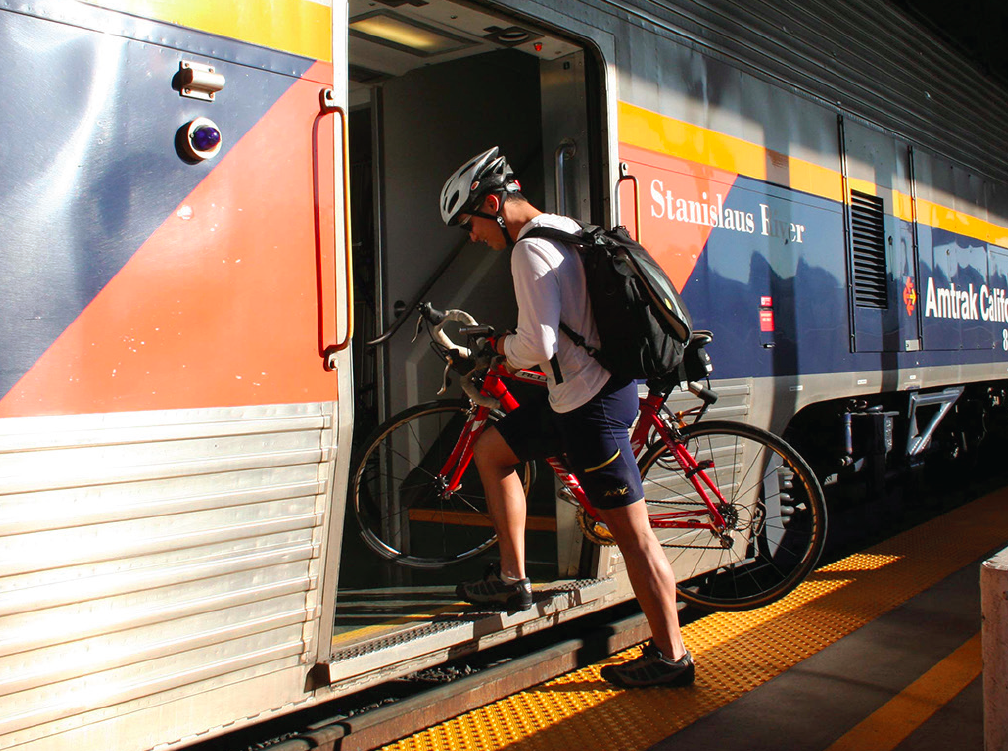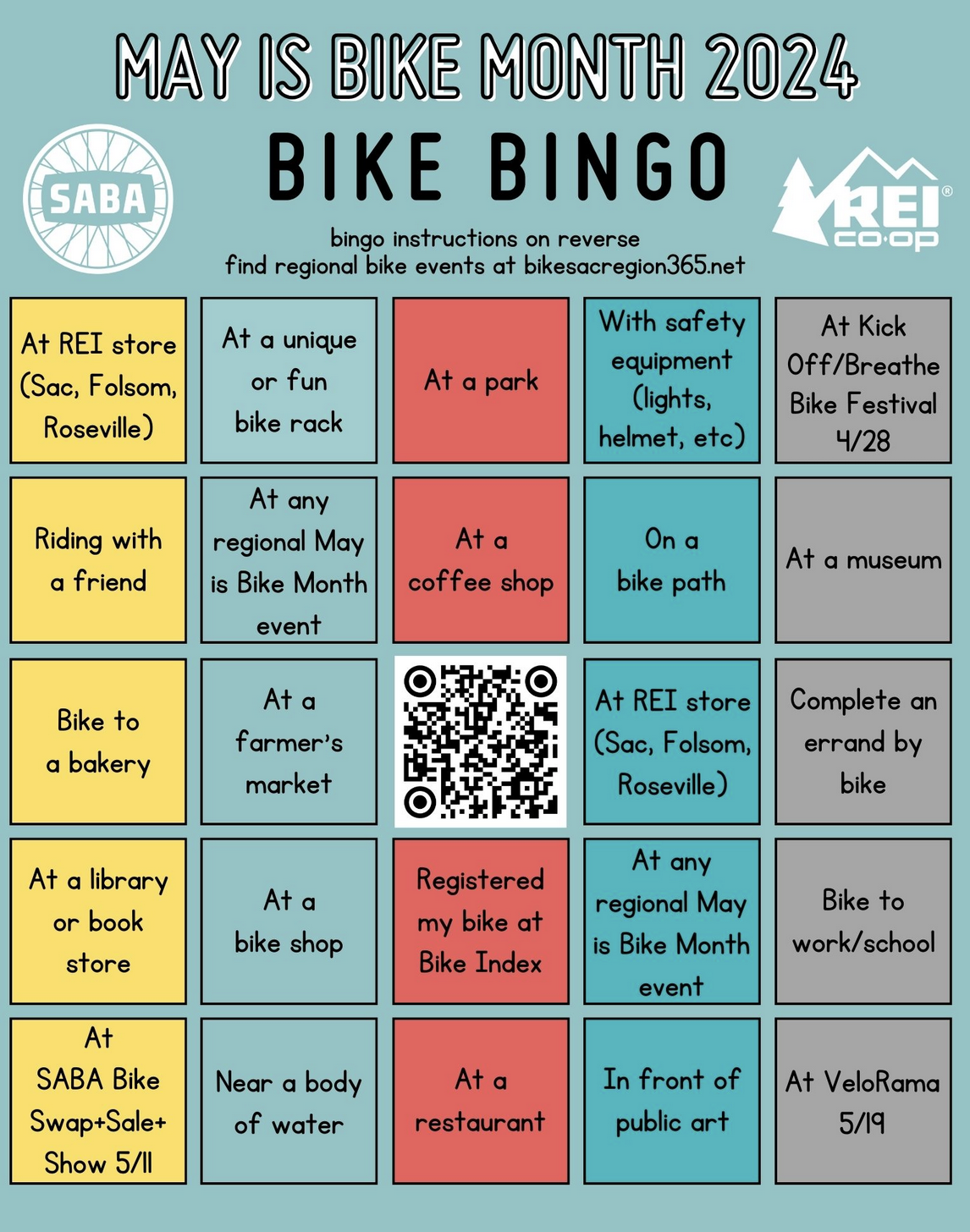What’s Happening with Transit in California?
4:44 PM PDT on March 18, 2020

Image: Capitol Corridor
UPDATE: As expected, since this post was published several transit agencies have adjusted their schedules and service hours. These include BART, Capitol Corridor, LA Metro, and SacRT. The changes have been incorporated below, but expect more to come.
NOTE: As of Wednesday afternoon, the counties of Alameda, Contra Costa, Marin, Mendocino, Monterey, San Benito, San Mateo, San Francisco, Sonoma, Santa Clara, Santa Cruz, and Yolo have adopted mandatory shelter-in-place orders that restrict travel unless for essential work or essential activities. So has the city of Palm Springs, and Berkeley, which is within Alameda County. Sacramento, Los Angeles, and Orange counties have ordered bars and dine-in restaurants to close, and recommended that people stay home.
This is changing from hour to hour, and other counties will likely adopt similar orders soon.
Today is Transit Driver Appreciation Day! Also today, transit ridership is through the floor (see this depressing look at numbers worldwide) as people stay home from work and school. Transit is considered an "essential service," and operators have been sticking to their schedules for the most part, but they are also taking stock and beginning to make adjustments.
Running largely empty trains and buses is good for allowing people to sit far apart from each other, but it's terrible from a budget perspective. Transit experts like Jarret Walker have been warning that transit can't survive without help, and the American Public Transit Association has requested that help from the federal government, to the tune of $12 billion. The failure of transit systems would bring dire consequences for everyone who relies on transit, for the people who work there, and for the health of the planet.
Everything is looking pretty grim right now, but if transit goes into a freefall it will be very difficult to recover once the coronavirus has run its course. Transportation for America has a petition to Congress to remind them that transit needs to be included in any stimulus package they consider. It might be a hard sell--most members of Congress and the people who support them do not themselves rely on transit.
Meanwhile transit workers are still showing up to work. In the last few days agencies have begun to announce schedule changes and reductions. The situation is very much in flux, and as more counties issue "shelter-in-place" orders and fewer people travel, it will change again.
There are hundreds of transit agencies in the state, ranging in size from a few bus routes to regionwide rail and bus operators like LA Metro. Below is a sample of how some of them are responding to the crisis, right now:
LA Metro, where as of today the county has not yet issued a mandatory "shelter in place" order, says it "may adjust service on certain lines based upon street realities" but has no plans to shut operations. In its blog The Source, it writes:
Metro is a mobility safety net for many people in Los Angeles County. That includes many who work in hospitals, nursing homes, groceries and other places that are too important to fail right now.
On Thursday, Metro announced some operations reductions, mostly less frequent service and an earlier shutdown of rail. See Joe Linton's Streetsblog Los Angeles write up here.
Check Metro's twitter feed @metrolosangeles for updates.
San Francisco's Muni has announced reduced and modified service. See Roger Rudick's write up at Streetsblog San Francisco here.
BART (Bay Area Rapid Transit) has seen an 87 percent drop in ridership as of today, perhaps not surprisingly, since it serves the Bay Area counties under mandatory orders to stay home. Today it announced:
BART is running regular service, with trains long enough for social distancing, to provide transportation for essential workers such as health care providers, first responders and grocery store clerks.
While BART plans to maintain its regular fifteen-minute headways during commute hours systemwide, starting tomorrow some of the extra commute trains serving peak hours along the Antioch-SFO route will be eliminated, until further notice.
Social distancing will remain possible on [that] line all day. BART staff pulled data from Wednesday morning showing cars that make up the extra commute trains carried an average of seven riders per car. Moving these riders to [other] trains... will not cause crowding and riders will be able to maintain social distancing.
On Thursday, March 9, BART announced that it will begin cutting evening service hours starting Monday, March 23, now closing at 9 p.m. as a cost-saving measure. See here for more details. While there have been very few riders on the later trains in the last few days, those riders nevertheless need the transit, and they may be in a tight spot if they can't get on an earlier train.
Caltrain, which serves the San Francisco peninsula cities, has announced that it will run on a reduced peak-hour schedule.
"Public transit services are identified as 'essential' under the order and will continue to operate," it writes, "however, use of public transportation is limited to essential required travel only."
Check for details and updates here.
SacRT, which serves the entire Sacramento region with light rail and buses, has so far only canceled routes that only serve schools, which have been closed. "It is our goal to continue to operate regularly scheduled service," says its website, but the agency "is evaluating daily the progress of COVID-19" to determine if other service adjustments will be needed. The region has stopped just short of issuing a mandatory shelter-in-place order. Bars and dine-in restaurants are supposed to be closed, and people are advised to stay home.
On Thursday evening, SacRT announced it will reduce service starting on Monday, March 23 to Sunday service seven days a week. It will continue to operate some services, such as the Green Line light rail and some peak commuter routes, that are not included in the regular Sunday schedule. See details here.
From its website:
In the midst of COVID-19 precautions, some of us must continue to work in order to provide essential service for our community. Life around us has been put on hold; however, SacRT operators and supporting staff, including maintenance, facility, administrative and other front-line personnel, continue to operate business as usual to keep the region moving. It’s more important than ever to recognize those individuals who are dedicated to public service. Please join SacRT in thanking all of our operators and staff today, Transit Driver Appreciation Day, and every day!
Check here for specific route and schedule changes.
Amtrak's Capitol Corridor service, between San Jose and Sacramento, will make some schedule changes beginning Saturday, March 21. It will reduce train frequencies to five round trips daily between Sacramento and Oakland (four of them will continue to San Jose). Several connecting bus services will be suspended, including the Emeryville-San Francisco bus (passengers can take BART to and from the Richmond station). Several stations will also have reduced staff, or will close, although trains will continue to stop there, and onboard food service will be suspended.
On Thursday evening, the Capitol Corridor announced it will eliminate several trains from its schedule on Friday, March 20. See here for details.
Amtrak's Pacific Surfliner route is "monitoring the situation" and may reduce operations beginning on Saturday as well. Check for updates here.
Amtrak's San Joaquin service through the Central Valley has made no announcements of schedule changes.
The ACE train, serving commuters between San Jose and the Central Valley, has suspended its pilot Saturday service, reduced the length of trains, and limited service to three round-trips per day on their regular schedules.
Almost every local agency operating transit has a page with information about the coronavirus, and for the most part right now they are monitoring the situation. For example, Santa Monica's Big Blue Bus has suspended several routes that serve Santa Monica City College, but otherwise is keeping to its regular schedule.
As noted, expect more changes. The question of what happens after this pandemic is over remains open.
Streetsblog California editor Melanie Curry has been thinking about transportation, and how to improve conditions for bicyclists, ever since commuting to school by bike long before bike lanes were a thing. She was Managing Editor at the East Bay Express, editor of Access Magazine for the University of California Transportation Center, and earned her Masters in City Planning from UC Berkeley.
Read More:
Stay in touch
Sign up for our free newsletter
More from Streetsblog California
State E-bike Incentive Program Update
E-bike battery certification requirements, and get ready now for the first launch window.
Commentary: Merchants Are Getting People Killed
The number one local obstruction to curbing traffic violence is local commerce and merchant groups.
Freeway Drivers Keep Slamming into Bridge Railing in Griffith Park
Drivers keep smashing the Riverside Drive Bridge railing - plus a few other Griffith Park bike/walk updates
Wednesday’s Headlines
Bike Month begins; Transit dangers; Yolo causeway project "not air quality concern" and Sacramento gets an F in air quality; Universal basic income could get a lot of people off the streets; More




